

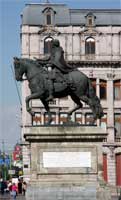
|
Now situated in the plaza named for the sculptor in front of the Museo Nacional de Arte, this statue has a complicated history. (See Wikipedia for the details of its various sites.) A Spanish precedent for this work might be the Equestrian Statue of Philip III, in the Plaza Mayor in Madrid, executed in the early 17th century by Giambologna and Pietro Tacca. Born in Spain and a student in Madrid, the Mexican sculptor Manuel Tolsá would of course have known this earlier work. However, the earliest and most important precedent is the equestrian statue of Marcus Aurelius, a Roman work of the late 2nd century CE. (See many images of this work here.) Like earlier examples, the beautifully caparisoned horse is remarkable with a long lush tail and the prance of an heroic steed. The authority of the king is indicated by his erect posture and forthright gaze, by the baton he holds, and by his control of the reined-in stallion. | |
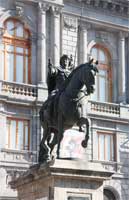
|
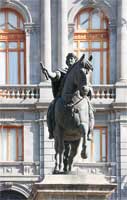
|
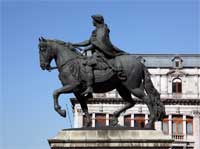
|
Details of the caparisoning and Charles' regalia (note the sandals especially) |

|
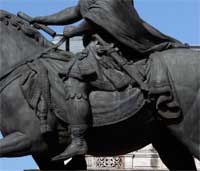
|
 Go to the Mexico Index.
Go to the Mexico Index.
 Click here to return to index of art historical sites.
Click here to return to index of art historical sites.
 Click here to return to index of artists and architects.
Click here to return to index of artists and architects.
 Click here to return to chronological index.
Click here to return to chronological index.
 Click here to see the home page of Bluffton University.
Click here to see the home page of Bluffton University.

